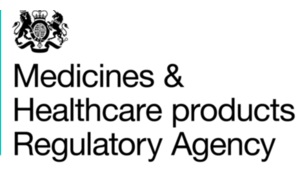
-
28th Aug 2012, 04:40 PM
#2
Don't know if this will help, but the BARQA website has a Q&A that is similar:-
Documentation of Equipment Calibration
What level of documentation of calibration of equipment used in clinical trials is required?
Date: 3rd February 2011
As per ICH GCP 8.2.12, medical/laboratory/technical procedures/tests need some type of certification or accreditation, established QC and/or external quality assessment, or other validation to document competence of a facility to perform required tests and support reliability of data.
Further, ICH GCP 8.2.11 states there should be documented certification, or accreditation for laboratory results that are generated. In practice this normally consists of a full set of lab normal ranges for all tests being conducted as part of the study, as well as a laboratory accreditation certificate and/or details of QC/QA scheme participation. An accreditation certificate provides a means of determining and recognising the competence of facilities to perform specific types of testing, measurement, inspection and calibration, which demonstrates they are performing their work correctly and to appropriate standards, and provides them with a benchmark for maintaining that competence and supporting reliability of results. Furthermore, sections 8.3.6 and 8.3.7 of ICH GCP state you must document normal values and ranges that are revised during the trial and document that tests remain adequate throughout the trial period. Therefore, the monitor should ensure lab normal ranges are collected at the beginning of the trial and checked throughout the trial for updates, in the event the normal ranges are revised. The site staff should be able to advise you when a revision may / will take place.
For equipment such as ECGs, Thermometers, Blood Pressure machines, X-Rays and CT Scans: in a hospital/clinic setting, these types of equipment are usually serviced and/or calibrated on a yearly basis by either maintenance, a contractor, or the manufacturer, and have a sticker placed on the equipment that is initialled and dated. The schedules for the maintenance and/or calibration should be maintained by the hospital or stated in the SOPs. A sticker placed on the equipment that is dated and initialled should be sufficient. The stickers usually have the next date the equipment is to be serviced. Also, for ECG, we need to consider the ICH E14 Guideline (see the extract quoted): "Machine calibration records and performance data should be maintained on file. In the case of multicenter trials, training sessions are encouraged to ensure consistency of operator technique (e.g., skin preparation, lead placement, patient position) and data acquisition practices."
Refrigerators and freezers: we should be able to see a daily temperature log, as well as a maintenance/calibration sticker. The site should be able to obtain a copy of the temperature log to keep with the study files at the end of the study covering the period the study took place (this can be obtained weekly, monthly or at the end of the study). Some inspectors are asking that the refrigerator and the temperature device be identified and that the temperature log contain these IDs or serial numbers.
If specific criteria were identified in the protocol or study manual for equipment it would be expected that a check would be conducted for calibration and/or maintenance according to the protocol/ manual. For example, the protocol may identify a specific speed for the centrifuge or angiograph equipment that may require that specific grid criteria are identified as well.
If you are supplying specific laboratory supplies (e.g., blood tubes, pregnancy tests) you should also keep a check on the expiry date of all supplies used in the study. Schedules for
maintenance of such equipment should be maintained by the hospital or documented in their SOPs.
Under 5.18.4 ICH GCP it is the monitor’s responsibility to verify that the investigator has adequate resources (also see 4.1, 4.2, 5.6) and they remain adequate throughout the trial period, and those facilities, including laboratories, equipment, and staff, are adequate to safely and properly conduct the trial and remain adequate throughout the trial period.
Documentation regarding calibration/validation etc should be readily available in case of audit or inspection.
 Posting Permissions
Posting Permissions
- You may not post new threads
- You may not post replies
- You may not post attachments
- You may not edit your posts
-
Forum Rules






 Reply With Quote
Reply With Quote